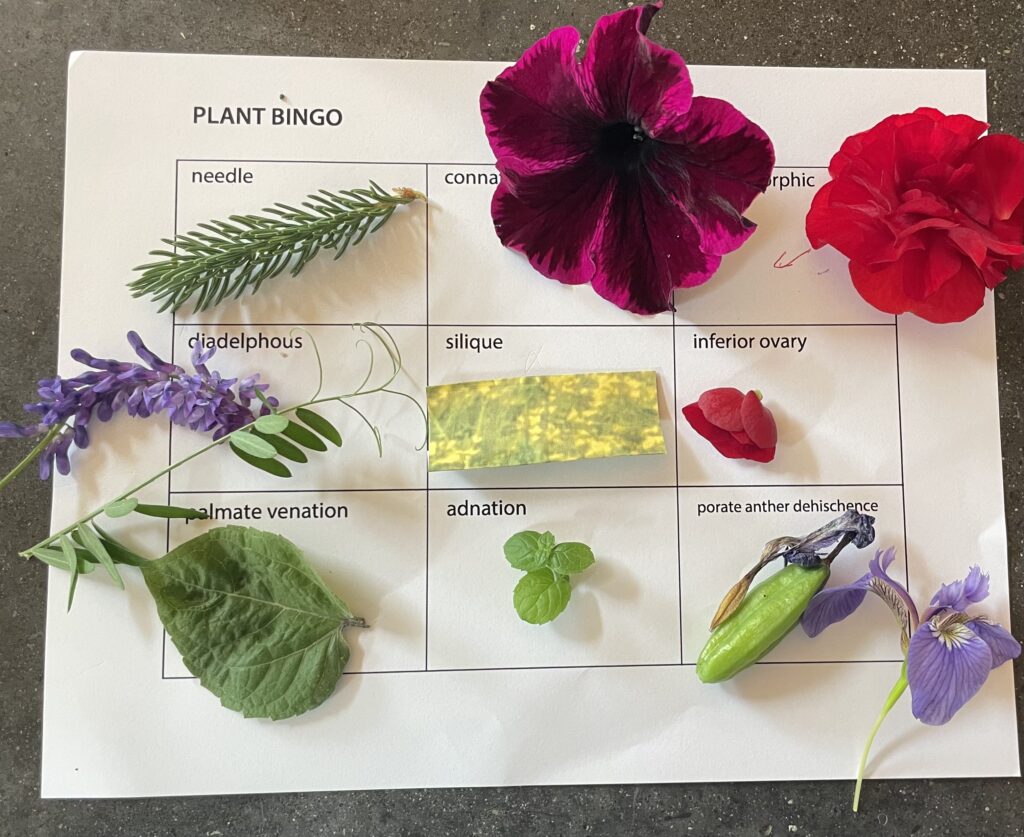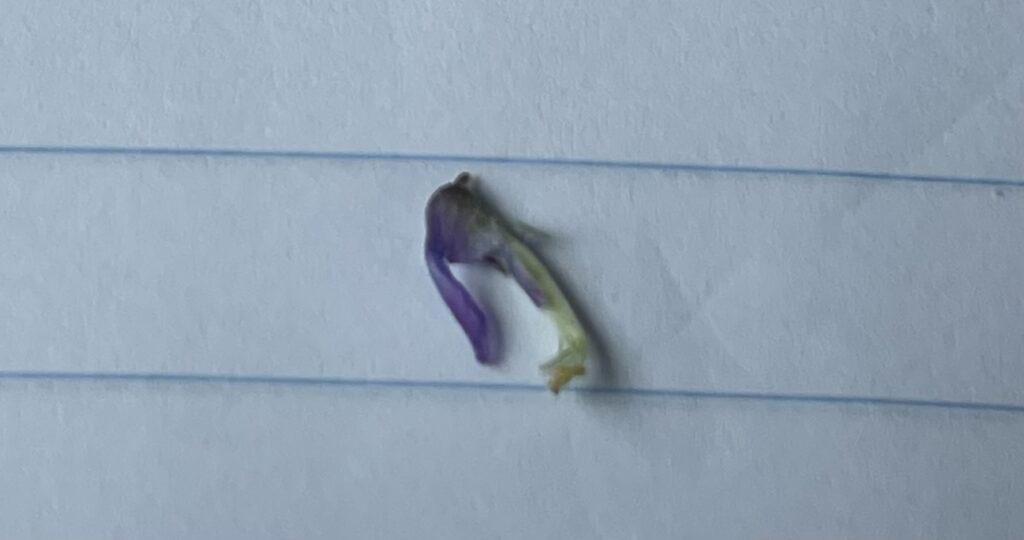I struggled a little with a few, but here’s my explanation
- Needle = white spruce
- Connation = petunia
- actinomorphic = begonia
- diadelphous = purple vetch. I included another photo, but it’s not great. I read that it is diadelphous because I couldn’t see it well enough.
- silique = I went with a photo of creamer’s field since I couldn’t find anything at my home. I believe the yellow flowers at creamers field are in the mustard family.
- inferior ovary = the begonia
- palmate venation= sunflower leaf
- adnation = mint (if didn’t flower, so I just did leaf)
- porate anther dehiscence = I’m not sure I got this one, but I tried an iris




Great job Julie! It is great that you put an explanation to your bingo card. There are a few Brassicaceae at Creamer’s Field, and most of them are yellow, but there are a few white ones as well. You can look over the Course manual on the website, it has a write-up of each of the common families and Brassicaceae is one of them. Yes, vetch has diadelphous stamen arrangement. If you take a peak and remove the petals and sepals from the flower. I know these are tiny, so maybe you can find a pea flower in somebody’s garden, they are a bit larger, or a lupine? But they show that 9 stamens are fused into a tube, and the tenth stamen is distinct. Iris is described as having longitudinal stamen or poricidal stamen dehiscence, I have to look more closely to see at Iris setosa to see. Well done!